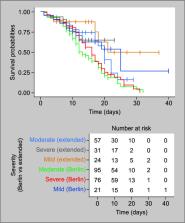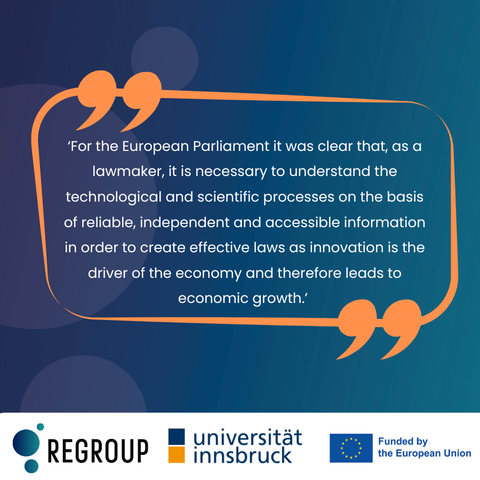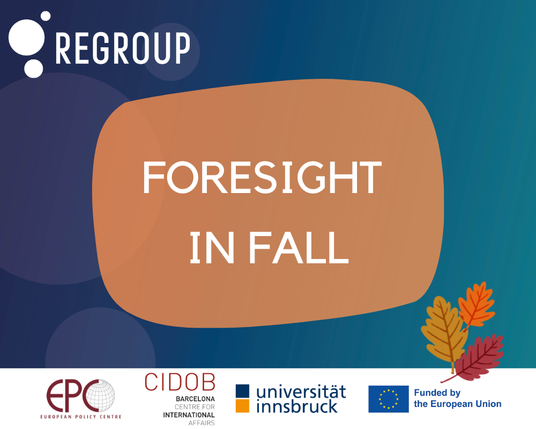
🤔 What SARS-CoV-2 Teaches Us About Human Certainty - Heliox: Where Evidence Meets Empathy 🇨🇦
See corresponding substack episodeHow a microscopic invader exposed our dangerous addiction to simple storiesWe love our neat packages. Lock and key. Good and evil. Us and them. Simple cause, simple effect. It's how we make sense of a world that o...
'Validation of Global Definition of Acute Respiratory Distress Syndrome in COVID-19 Patients: A Retrospective Study' - a #JaypeeJournals 'Preventive and Emergency Medicine Insights' publication on #ScienceOpen:
📄🔓 https://www.scienceopen.com/document?vid=ef4064ab-03e0-469c-a83e-efd50f96cce2
#ARDS #GlobalARDSDefinition #HFNO #CriticalCare #COVID19Research

Validation of Global Definition of Acute Respiratory Distress Syndrome in COVID-19 Patients: A Retrospective Study
<div xmlns:xsi="http://www.w3.org/2001/XMLSchema-instance" class="section">
<a class="named-anchor" id="d893418e180">
<!--
named anchor
-->
</a>
<h5 class="section-title" id="d893418e181">Background and aims</h5>
<p dir="auto" id="d893418e183">A recent acute respiratory distress syndrome (ARDS) definition included patients receiving
high-flow nasal oxygen (HFNO) when fulfilling the oxygenation and radiological criteria
of ARDS Berlin definition. However, outcome of patients treated may be better than
those who fulfilled the corresponding class of Berlin definition. This study was aimed
to compare the survival between patients fulfilling Berlin definition and patients
managed by HFNO initially.
</p>
</div><div xmlns:xsi="http://www.w3.org/2001/XMLSchema-instance" class="section">
<a class="named-anchor" id="d893418e185">
<!--
named anchor
-->
</a>
<h5 class="section-title" id="d893418e186">Patients and methods</h5>
<p dir="auto" id="d893418e188">Patients fulfilling the World Health Organization case definition of severe or critical
COVID-19 infection requiring HFNO (at least 30 L/minute of flow), noninvasive ventilation
(NIV) (at least a positive end-expiratory pressure (PEEP) of 5 cm H
<sub>2</sub>O), or invasive mechanical ventilation (at least a PEEP of 5 cm H
<sub>2</sub>O) were included in this study provided they fulfilled oxygenation and radiological
criteria of ARDS as per Berlin definition.
</p>
</div><div xmlns:xsi="http://www.w3.org/2001/XMLSchema-instance" class="section">
<a class="named-anchor" id="d893418e196">
<!--
named anchor
-->
</a>
<h5 class="section-title" id="d893418e197">Results</h5>
<p dir="auto" id="d893418e199">All-cause hospital mortality rate in patients who fulfilled Berlin definition (
<i>n</i> = 193) was 47.6% (mild ARDS), 64.9% (moderate ARDS), and 67.9% (severe ARDS) (
<i>p</i> = 0.23). Multivariable survival analysis reported that hazard of death was higher
in patients who fulfilled Berlin definition as opposed to those who were initially
managed by HFNO (adjusted hazard ratio (95% confidence interval) 1.68 (1.15–2.45),
<i>p</i> = 0.007) after adjustment for age, Charlson comorbidity index, and baseline PaO
<sub>2</sub>/FiO
<sub>2</sub> ratio. Multiple pairwise comparison reported that hazard of death was lower in patients
with moderate ARDS requiring HFNO as compared with the moderate ARDS patients as per
Berlin definition (
<i>p</i> = 0.024). However, no difference was observed in patients of mild (
<i>p</i> = 0.39) and severe ARDS (
<i>p</i> = 0.24).
</p>
</div><div xmlns:xsi="http://www.w3.org/2001/XMLSchema-instance" class="section">
<a class="named-anchor" id="d893418e226">
<!--
named anchor
-->
</a>
<h5 class="section-title" id="d893418e227">Conclusion</h5>
<p dir="auto" id="d893418e229">We have found a statistically significant higher survival in ARDS patients managed
by HFNO in the first 24 hours after intensive care unit (ICU) admission when compared
with the patients receiving NIV or invasive mechanical ventilation. So, we conclude
that outcome of patients fulfilling the global definition of ARDS is largely different
from those who fulfilled Berlin definition. Hence, prospective multicentric validation
is required before its bedside use.
</p>
</div><div xmlns:xsi="http://www.w3.org/2001/XMLSchema-instance" class="section">
<a class="named-anchor" id="d893418e231">
<!--
named anchor
-->
</a>
<h5 class="section-title" id="d893418e232">How to cite this article</h5>
<p dir="auto" id="d893418e234">Maitra S, Baidya DK, Ray BR, Kayina CA, Haritha D, Nair PR,
<i>et al</i>. Validation of Global Definition of Acute Respiratory Distress Syndrome in COVID-19
Patients: A Retrospective Study. Indian J Crit Care Med 2025;29(7):556–561.
</p>
</div>
Repositioning antivirals against COVID-19: Synthetic pathways, mechanisms, and therapeutic insights.
<p xmlns:xsi="http://www.w3.org/2001/XMLSchema-instance" class="first" dir="auto" id="d6481623e211">The pandemic of COVID-19 has ignited a global race to locate effective therapies with
drug repositioning emerging as a leading strategy due to its cost-effectiveness and
established safety profiles. Remdesivir, Favipiravir, Hydroxychloroquine, and Chloroquine
have been the focus of rigorous clinical trials to determine their therapeutic potential
against SARS-CoV-2. This article delves into the innovative synthetic strategies behind
these drugs, providing a blueprint for researchers navigating the complex landscape
of antiviral development. Beyond synthesis, we explore the fascinating mechanisms
of action: hydroxychloroquine and chloroquine elevate lysosomal pH to impede autophagy
and viral replication; favipiravir, a nucleoside analogue, induces lethal mutagenesis
or RNA chain termination and remdesivir disrupts viral RNA synthesis through delayed
chain termination. By merging synthetic methodologies with mechanistic insights, this
article offers a comprehensive resource aimed at accelerating the development of potent
COVID-19 therapies and underscores the crucial part that chemistry in addressing global
health emergencies. It also underscores the vital function of chemistry in addressing
global health emergencies and highlights how innovative drug design and repurposing
can provide rapid responses to emerging infectious diseases. This fusion of chemistry
and virology not only advances our understanding of drug action but also paves the
way for the discovery of new therapeutic agents crucial in future pandemics.
</p>
Foresight in fall!🍂
Caroline Böck and @MatthiasKettemann explore how foresight studies can guide legislative processes in #postpandemicEU uphold intergenerational justice and international solidarity amid rapid digitalization.
Read the full paper, published in May, here: https://regroup-horizon.eu/publications/future-technological-innovations/
@uniinnsbruck
@politicalscience @politicaltheory @sociology
#regroup #pandemicpolitics #covid19research #pandemicpolicy
Mapping the future of technological innovations - REGROUP
This Foresight paper discusses the application of future studies and strategic foresight in legislative processes, particularly concerning digitalization in post-pandemic Europe. The paper highlights...
What can Europe learn from the #covid19crisis?
#regroup researcher Prof Lars Rensmann points to multiple lessons to be better prepared for future crises:
👉Invest more in science and public health
👉Prioritise solving pre-existing issues structurally
https://regroup-horizon.eu/video-lars-rensmann/
@politicalscience @politicaltheory @sociology
#pandemicpolitics #covid19research #pandemicpolicy #covid19policy

REGROUP VIDEO #2 | Meeting with... Lars Rensmann - REGROUP
How has the Covid-19 pandemic affected populism and public debates in Europe? In this video, Lars Rensmann reflects on...
Foresight in fall! 🍂
Víctor Burguete, from @CidobBarcelona, explored 4 scenarios based on a reform of global governance and the EU’s role in shaping it to help policymakers design better policies for future risks following the #covid19 pandemic.
Read the paper here: https://regroup-horizon.eu/publications/risks-and-scenarios-after-covid-19/
@politicalscience @politicaltheory @sociology
#regroup #pandemicpolitics #horizoneu #horizoneurope #covid19research #covid19policy
#regroup presents: Foresight in fall! 🍂
The foresight papers of WP7-9 are published, exploring future scenarios for a #postpandemic #EU, #globalrisks, and #digital strategies for resilience. In the next weeks, we'll highlight each paper.
Can't wait? Find the papers on our website: https://regroup-horizon.eu/publications/
#regroup #pandemicpolitics #horizoneu #horizoneurope #covid19research #pandemicpolicy #europeanunion
@politicalscience @politicaltheory
#PanDDemiC highlight!🌟
One of the new resources is a collection of publications and reports, made by the International Labour Organization for Italy & San Marino. It covers the impact of #covid19 policies on international labor standards, occupational health and safety.
Take a look! https://panddemic.regroup-horizon.eu/
Follow us on X: https://x.com/regroup_horizon
@politicalscience @politicaltheory @sociology
#regroup #horizoneurope #horizoneu #covid19research #pandemicpolitics #pandemicpolicy


PanDDemiC - Pandemic data and documentation centre
Powered by REGROUP Suggest resource Clear filters Resource topic Resource topic Policy-making and institutions Political dynamics Societal consequences Political economy International relations The EU and European integration Rights and freedoms Information and disinformation Language, discourse, and communication Miscellaneous Resource type Recourse type Datasets Corpora Legal collections News collections Research projects Others A knowledge portal on […]
Are you doing research on the fiscal, monetary, and regulatory responses to the #covid19pandemic?
Check out this new resource on our #PanDDemiC portal by FinDev Gateway, who helps you to find relevant datasets on #microfinance and financial inclusion.
👉Visit: https://panddemic.regroup-horizon.eu/
#regroup #pandemicpolitics #covid19research #horizoneu #horizoneurope
@politicalscience @politicaltheory @sociology

PanDDemiC - Pandemic data and documentation centre
Powered by REGROUP Suggest resource Clear filters Resource topic Resource topic Policy-making and institutions Political dynamics Societal consequences Political economy International relations The EU and European integration Rights and freedoms Information and disinformation Language, discourse, and communication Miscellaneous Resource type Recourse type Datasets Corpora Legal collections News collections Research projects Others A knowledge portal on […]
My preprint, "Spatial Patterns of COVID-19 Mortality: Socioeconomic Determinants in U.S. Counties," is now on medRxiv.
This research examines how factors like insurance, race, and income relate to COVID-19 mortality trends, highlighting key health disparities.
Read here: https://www.medrxiv.org/content/10.1101/2024.10.30.24316443v1
Feedback welcome as it enters peer review! #COVID19Research #Epidemiology #PublicHealth

Spatial Patterns of COVID-19 Mortality: Examining Socioeconomic Determinants in U.S. Counties Using Cluster Analysis
Abstract Aim: This study aims to investigate the spatial patterns of COVID-19 mortality across U.S. counties and identify the socioeconomic determinants that influence these mortality trends, using spatial epidemiological methods. Subject and Methods: We conducted a spatial analysis of COVID-19 mortality data from over 3,000 U.S. counties, applying cluster detection techniques, including SatScan, to identify areas with significant mortality trends. Spatial regression models, including spatial lag and spatial error models, were employed to examine the impact of socioeconomic variables, such as race, income inequality, and insurance rates, on COVID-19 mortality. The analysis controlled for multicollinearity and spatial autocorrelation in the data. Results: Counties with higher proportions of Black populations and higher uninsured rates exhibited significantly lower COVID-19 trends over the study period. Spatial clustering revealed regions in the northwestern and eastern/northeastern United States with a mix of positive and negative mortality rate trends. The spatial lag model showed the strongest fit, confirming the importance of spatial dependency in explaining mortality patterns. Conclusion: This study highlights the significant spatial disparities in COVID-19 mortality across U.S. counties. The findings emphasize the need for targeted public health interventions in vulnerable regions to address these disparities. Keywords: COVID-19 mortality, socioeconomic status (SES), spatial regression, health disparities, spatial clusters
### Competing Interest Statement
The authors have declared no competing interest.
### Funding Statement
This study did not receive any funding.
### Author Declarations
I confirm all relevant ethical guidelines have been followed, and any necessary IRB and/or ethics committee approvals have been obtained.
Yes
I confirm that all necessary patient/participant consent has been obtained and the appropriate institutional forms have been archived, and that any patient/participant/sample identifiers included were not known to anyone (e.g., hospital staff, patients or participants themselves) outside the research group so cannot be used to identify individuals.
Yes
I understand that all clinical trials and any other prospective interventional studies must be registered with an ICMJE-approved registry, such as ClinicalTrials.gov. I confirm that any such study reported in the manuscript has been registered and the trial registration ID is provided (note: if posting a prospective study registered retrospectively, please provide a statement in the trial ID field explaining why the study was not registered in advance).
Yes
I have followed all appropriate research reporting guidelines, such as any relevant EQUATOR Network research reporting checklist(s) and other pertinent material, if applicable.
Yes
All data produced are available online at https://www.rwardrup.com/download/data-r-code-for-covid-19-spatial-clusters-ses/



